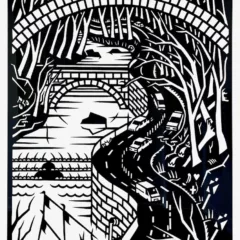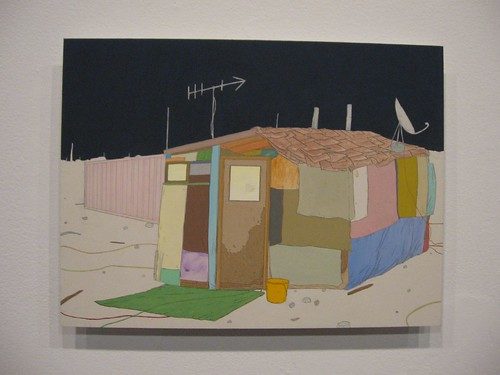
The new camouflage tenting material is made of recycled fabric. Such is the new camping these days, and it’s showing up in art work all around town.
Last night we spotted it in several pieces by Amze Emmons, at his World Headquarters exhibit curated by InLiquid in the Painted Bride‘s cafe. Tents and buildings with patchwork fabric walls appear here and there in his unsettled cityscapes.
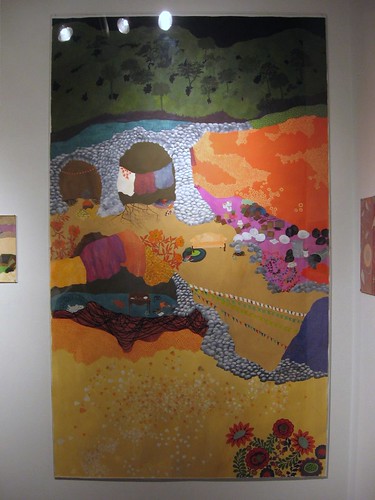
Katie Abercrombie’s landscape includes some ad hoc furnishings for the nomadic life.
Last week, we spotted a bit of the trend in work by Katie Abercrombie in Fleisher/Ollman’s Cave Painting show. Abercrombie sets up life in a cave with a patchwork curtain for a door and colorful cloths draped on rocks.
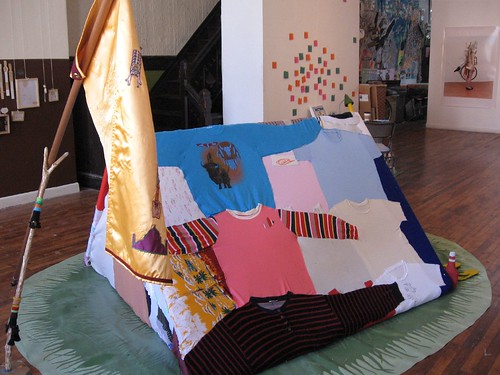
Kelie Bowman’s pieced tent made of clothes
And two weeks ago, Kelie Bowman set up a tent of sewn-together clothes in Space 1026.

Shinique Smith, Bale Variant 009 (Flag), 2005, at the show Future Nomad at Vox Populi, Jan. 2007
The recycling of fabric reminds me of Shinique Smith’s enormous bales of used clothes and fabric. There’s a sense of people migrating globally as well as locally.
South Americans are moving north, and several kids I know seem to be moving to South America. This is beyond an adventure. It’s nomadic.
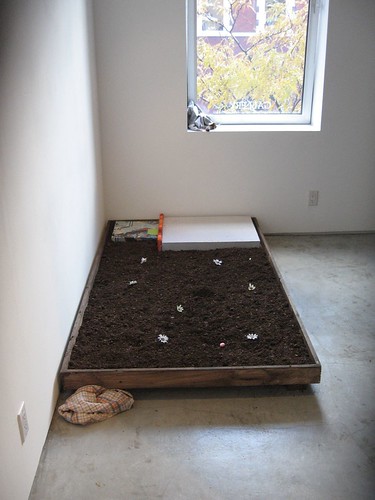
Rashawn Griffin, detail of Untitled (bed/landscape), 2006, mixed, in the exhibit Cotton Candy on a Rainy Day, at the Proposition.
I am also reminded of Rashawn Griffin’s earnest makeshift beds of pieced fabric. He has a couple of patchwork blanket/paintings at the Whitney Biennial right now. Griffin is all about homelessness, but the truth is nomads and migrants are homeless too.
The urge to migrate is probably no different than it has ever been. How else to explain the ancient blue-eyed, tartan-clad bodies found deep in China? Or the genetic record that we all came from Africa, some sooner, some later.
But this current use of patchwork tents in art suggests limitations and the desire to save the planet, all at once. Gone is the promise of a land where streets are paved in gold. Here in Philadelphia, the streets themselves are patchworks. And we are grateful for the opportunity to make do. It’s probably better for the environment. And it may be better for our characters. But either way, it’s better than falling into the ozone hole or the hole in the middle of the street, from which there’s no escape.




